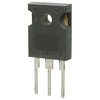-
A good PCB layout for optimal thermal performance involves placing the device near a thermal pad or a heat sink, using a large copper area for heat dissipation, and minimizing the distance between the device and the thermal pad or heat sink.
-
To ensure reliable operation at high temperatures, it's essential to follow the recommended operating conditions, use a suitable thermal interface material, and ensure good airflow around the device. Additionally, consider using a heat sink or thermal pad to dissipate heat efficiently.
-
To prevent ESD damage, handle the device in an ESD-protected environment, use ESD-protective packaging, and ground yourself before handling the device. Avoid touching the device's pins or leads, and use an anti-static wrist strap or mat when handling the device.
-
To calculate the power dissipation of the device, you need to consider the input voltage, output voltage, output current, and the device's efficiency. Use the datasheet's power dissipation formula and consult the application notes for guidance on calculating power dissipation in your specific application.
-
The recommended soldering conditions for the STPS80150CW involve using a soldering iron with a temperature of 260°C (500°F) for 10 seconds or less, and ensuring that the device is not exposed to temperatures above 260°C (500°F) for more than 10 seconds.
 STPS80150CW datasheet
by STMicroelectronics
STPS80150CW datasheet
by STMicroelectronics
Findchips
 STPS80150CW datasheet
by STMicroelectronics
STPS80150CW datasheet
by STMicroelectronics
 Findchips
Findchips